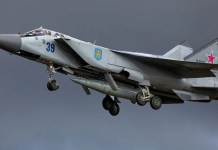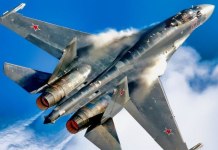Amid heightening tensions in Eastern Ladakh with China, India has reportedly deployed BrahMos and Nirbhay cruise missiles along with Akash surface-to-air missiles (SAMs) in a bid to counter Chinese misadventures in the region.
According to a report published by the Indian newspaper, the Hindustan Times, the missiles which serve as the core of India’s military arsenal will be used to deter the missile deployment by the People’s Liberation Army (PLA) in Xinjiang and Tibet regions.
Long-range SAMs along with Stand-off weapons up to a range of 2,000 kilometres have been deployed by the Western Theatre Command of the PLA since the stand-off kicked off between the two nations after the Galwan Valley Clash.
The deployment is located in the Aksai Chin region as well as in deeper positions from Kashgar, Hotan, Lhasa and Nyingchi along the 3,488 km Line of Actual Control (LAC).

The supersonic BrahMos cruise missile, which can be used to hit targets up to a range of 500 kilometres have been deployed in “sufficient numbers” in the Ladakh region. The missiles can reportedly evade enemy defence and target PLA camps and airbases by dropping a 300kg warhead on them.
IAF’s Su-30MKI fighter jets can also carry the air-launched versions of the cruise missiles to hit Chinese targets from within the Indian air space.
The Subsonic Nirbhay missiles, which have a range of up to 1,000 kilometres, have also been deployed in “limited numbers”, which can hit deep areas in the Chinese territory.
Whereas, the Akash SAMs can guard strategic Indian military installations and bases in the region by shooting down fighter jets, helicopters and drones breaching the Indian airspace.
China has ramped up efforts to deploy more troops along with a larger number of fighter jets along the border region. It has also upgraded the infrastructure of its airbases in the Lhasa region, according to reports.





